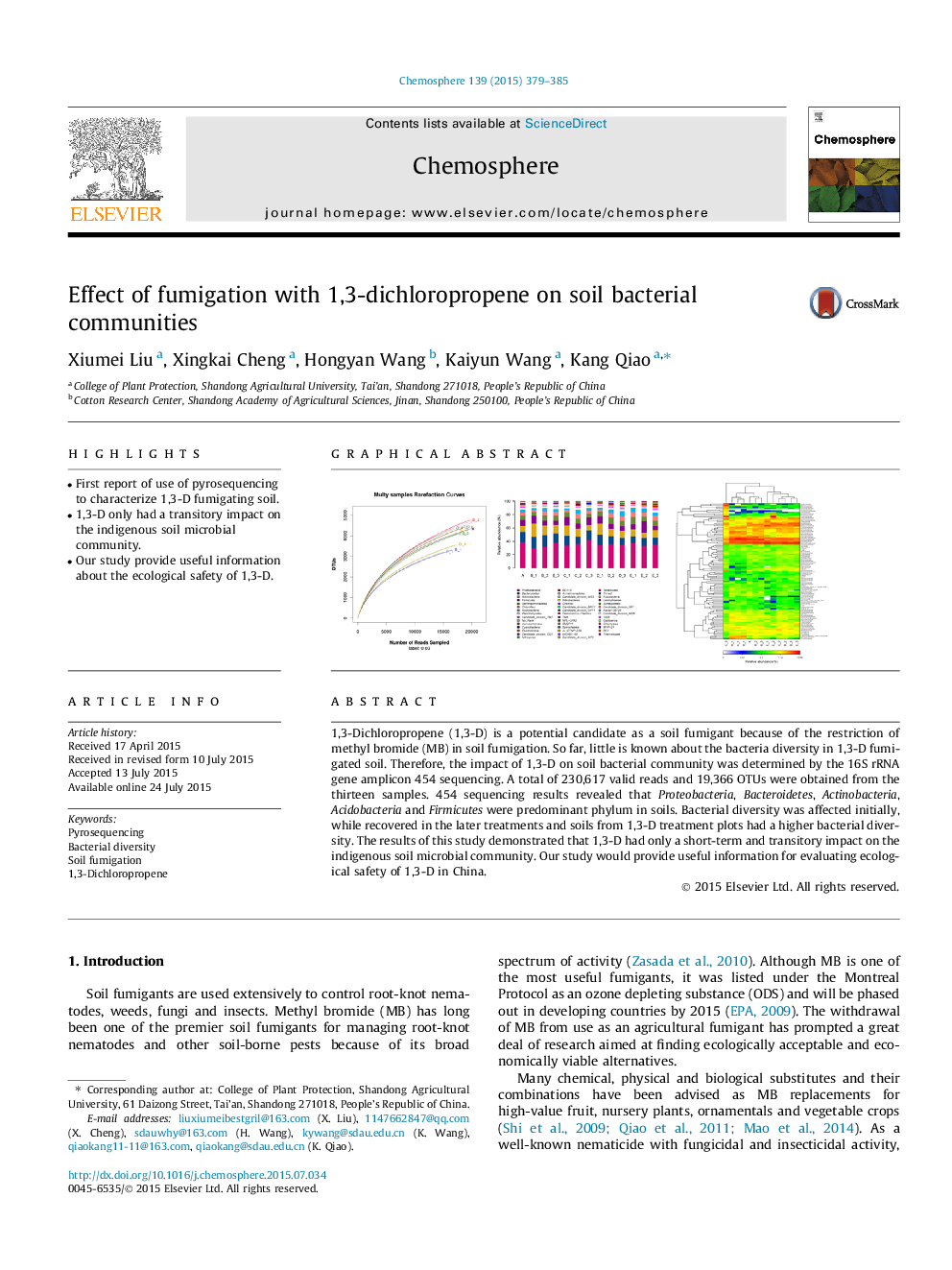| Article ID | Journal | Published Year | Pages | File Type |
|---|---|---|---|---|
| 4408170 | Chemosphere | 2015 | 7 Pages |
•First report of use of pyrosequencing to characterize 1,3-D fumigating soil.•1,3-D only had a transitory impact on the indigenous soil microbial community.•Our study provide useful information about the ecological safety of 1,3-D.
1,3-Dichloropropene (1,3-D) is a potential candidate as a soil fumigant because of the restriction of methyl bromide (MB) in soil fumigation. So far, little is known about the bacteria diversity in 1,3-D fumigated soil. Therefore, the impact of 1,3-D on soil bacterial community was determined by the 16S rRNA gene amplicon 454 sequencing. A total of 230,617 valid reads and 19,366 OTUs were obtained from the thirteen samples. 454 sequencing results revealed that Proteobacteria, Bacteroidetes, Actinobacteria, Acidobacteria and Firmicutes were predominant phylum in soils. Bacterial diversity was affected initially, while recovered in the later treatments and soils from 1,3-D treatment plots had a higher bacterial diversity. The results of this study demonstrated that 1,3-D had only a short-term and transitory impact on the indigenous soil microbial community. Our study would provide useful information for evaluating ecological safety of 1,3-D in China.
Graphical abstractFigure optionsDownload full-size imageDownload as PowerPoint slide
